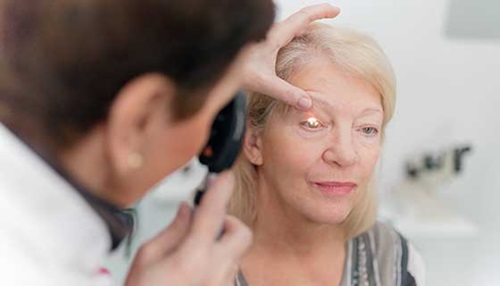Keratitis
Featured Expert:
Keratitis, also known as a corneal ulcer, is an inflammation or irritation of the cornea. Although treatable, this condition is the most common cause of corneal blindness through an infection in the United States. Cornea specialist Tiffany Liu, M.D., of the Wilmer Eye Institute, provides important information about this eye condition.
Keratitis Symptoms
Common symptoms of keratitis are:
- Red eye
- Foreign body sensation in the eye
- Eye pain
- Sensitivity to light
- Watery eyes
- Blurred vision
- Decrease in vision
Types of Keratitis
Infectious keratitis
This is caused by:
- Viruses, such as the herpes simplex virus type 1, the chickenpox virus, or viruses that cause some upper respiratory infections
- Bacteria
- Parasites
- Fungi
- Vitamin A deficiency
- Improper contact lens use, such as wearing them for too long, not cleaning them properly or wearing them while swimming
Noninfectious keratitis
This can be caused by:
- Injury to the cornea, such as a scratch
- Dryness or inflammation of the cornea
- Foreign body in the eye
- Overexposure to ultraviolet light
- Allergies
- Improper contact lens use, such as wearing them for too long, not cleaning them properly or wearing them while swimming
Keratitis Prevention
The best way to prevent keratitis is to look out for symptoms such as eye redness, pain, discomfort and change in vision. Contact lens hygiene is also essential to prevention. “If you wear contacts, it’s so important to follow the proper steps to clean and disinfect your lenses and change them out when needed," says Liu. "This prevents bacteria and other unsanitary bodies from infecting your eyes.”
Keratitis Diagnosis
Your eye doctor can diagnosis keratitis during an exam. In some cases, a sample of the corneal surface using a cotton swap, or a biopsy, may be needed.
Keratitis Treatment
The causes of keratitis are very diverse. Therefore, treatment varies based on the diagnosis.
For noninfectious keratitis
Mild case: Artificial tears
Severe case: A bandage to shield the eye and anti-inflammatory eye medication
For infectious keratitis
Mild case: Antibiotic, antiviral or anti-fungal eyedrops, depending on the cause of infection
Severe case: Oral medication
When to see a doctor
It’s important to see a doctor at the first signs of keratitis symptoms. “If not treated, keratitis can lead to a variety of issues, such as corneal scarring, frequent infections of the cornea, temporary - or even - permanent vision loss,” says Liu.
The Wilmer Eye Institute

Providing state-of-the-art eye care across nine locations in Maryland, the Wilmer Eye Institute offers specialized diagnosis and management of a wide range of eye conditions.







